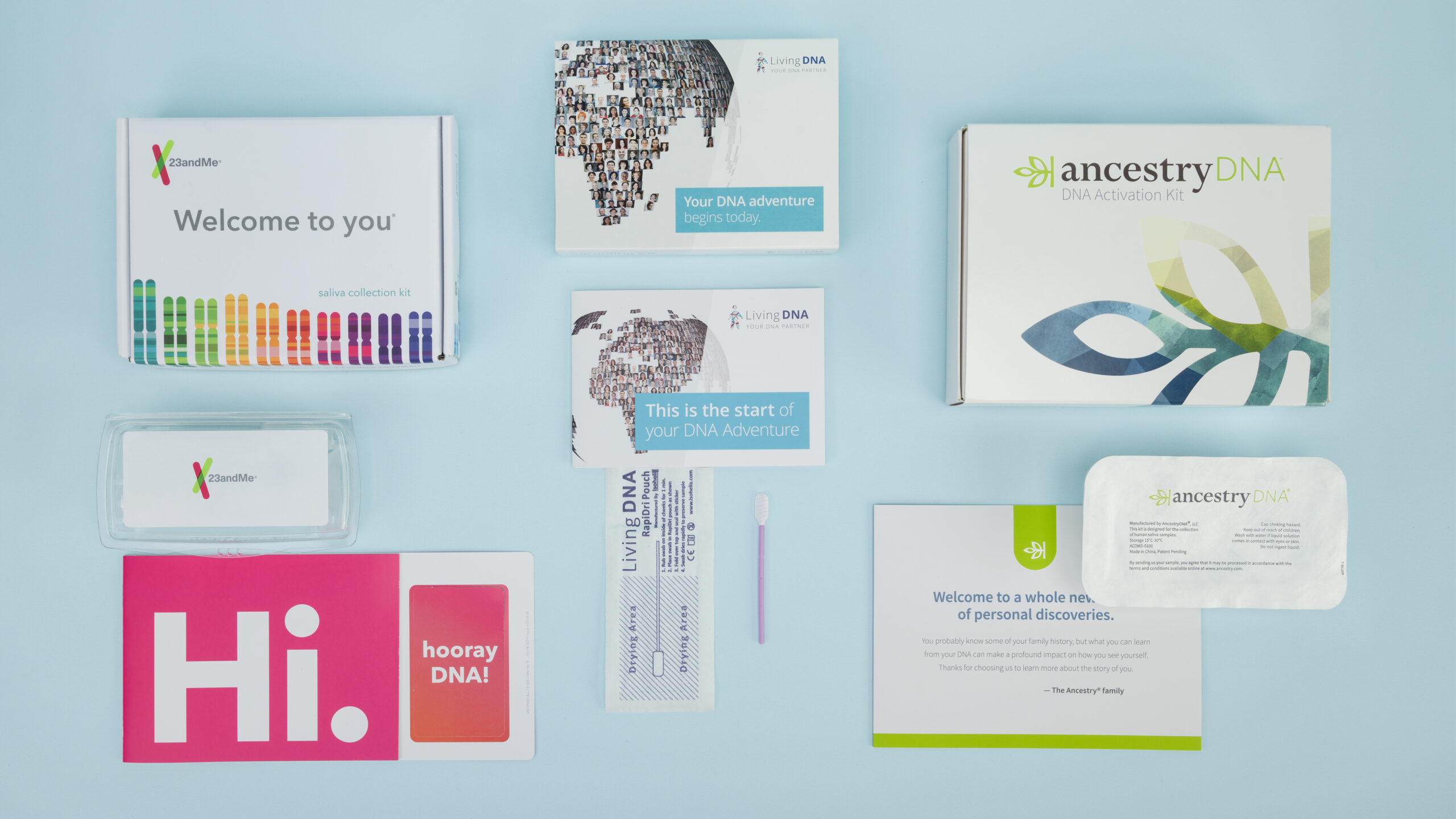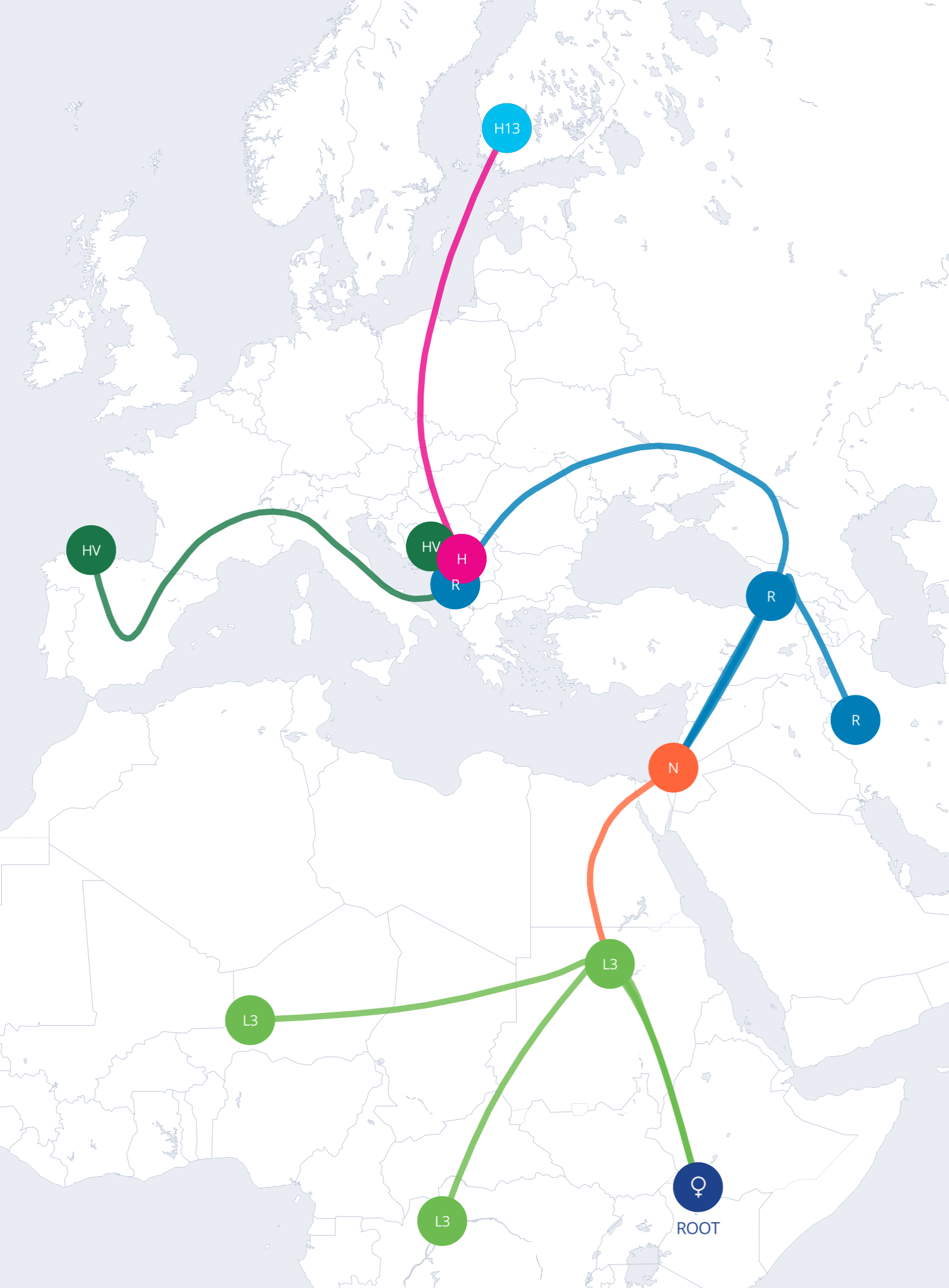In This Article
In This Article
Tracing your ancestors’ origins will involve a systematic approach that begins with personal knowledge and resources at home, along with using archives and databases to verify your research.
Here are some suggestions:
Yes. DNA testing kits can help you learn more about your family’s history.
It’s especially true for ancestry-focused DNA tests. They are useful in tracing where you and your family may have come from.

Know Your DNA Reviews

Don't miss out on the opportunity to learn more about yourself. Read our best DNA test page to find the best one for you.
DNA companies reveal your ancestry and geographical origins using your DNA data, historical records, and family tree.
By analyzing your genetic code, these tests can show insights into your ethnic background, geographical origins, and potential connections with relatives you may not know.
Companies like AncestryDNA and 23andMe use your DNA to reveal your ethnic background, showing you the places your ancestors may have lived.
These tests can also connect you with relatives you didn’t know you had, painting a more complete picture of your family tree. It’s a modern way to learn about your roots and understand the diverse mix that makes up your unique heritage.

Most DNA services use a system similar to matchmaking. DNA companies compare your genetic data with others who have done the test with them.
For example, AncestryDNA keeps “reference panels,” which contain the DNA of people from around the world.1 On the other hand, 23andMe groups its “reference populations.” It includes genetically similar people of known ancestry.2
Each company uses its tools and algorithms to find similar DNA segments. If they find a significant match, it suggests you have common ancestors.
DNA matching offers a bunch of exciting information. For instance, they can show you where your ancestors may have lived. It could help you track down possible relatives. DNA matches can also tell you which groups of people you share similar DNA with and how much of this DNA you share.
Summary
Each company uses its tools and algorithms to find a significant DNA match. DNA matches suggest you have common ancestors. It can also determine which groups of people you have similar DNA.
Genetic testing companies like AncestryDNA and MyHeritage have a database with access to:
You can search their records manually for an ancestor you’re familiar with. Some DNA companies have an automatic search feature that lets you know if they found a match in the database.
Summary
DNA testing companies usually have tons of different records in their database. You can search them for a known ancestor to trace your family history.
DNA testing services like My Heritage can search their members’ family trees. If you have a family tree on their database, they’d gladly help you find common ancestors.
Comparing family trees is a great way to learn where you’re from. But remember, it’s best to confirm with other users with matching family trees before drawing conclusions.
Matching family trees doesn’t fully guarantee you have the same ancestors or are related. Get in touch with the other concerned parties if you’d like to investigate further.
Summary
Family trees are extremely helpful in tracing your family history and tracking your origins. However, you may need to confirm some of the information in them. Matching family trees is no surefire evidence of shared ancestry or blood ties.
Understanding DNA ancestry testing may not be as complicated as you think. Companies that offer ancestry services have their way of doing things.
In general, ancestry-focused DNA tests use multiple testing methods. And they usually check for one or more types of DNA. There are three types of DNA most genetic ancestry testing companies use.
Y-DNA is the genetic material in the Y sex chromosomes, which only men have. It’s being passed down from fathers to their male children almost unchanged.
Since Y-DNA is inherited from fathers to sons, it’s a helpful tool for tracing patrilineal ancestry.
Men who want to uncover their father’s lineage should take Y-DNA tests.
MtDNA is the genetic material found in the mitochondria of the cells. Almost all cells in our body have mtDNA.
MtDNA is transferred from mothers and their children almost unchanged. DNA testing companies can use it to track your matrilineal ancestry. MtDNA tests are great for learning more about your mother’s lineage.
Autosomal DNA is the genetic material in your autosomal chromosomes, which you’ve inherited from your mother and father.
Autosomal DNA contains genetic information that you share with both parents. This includes relatives from your mother’s and father’s side of the family.
Summary
Most companies use three types of DNA to trace your ancestry. Y-DNA is only passed on between fathers and sons. MtDNA is inherited between mothers and their children. Autosomal DNA is from both parents.

Source: 123rf
If you want to look at your complete family history, find close relatives, and get estimates of your ethnic origins, you should consider autosomal testing.
Some DNA testing companies like Ancestry only offer autosomal tests. Others, like Family Tree DNA, offer separate autosomal, mtDNA, and Y-DNA tests.
But if you want more comprehensive results, you should consider testing kits like 23andMe, which can test for all three types of DNA.
For general ancestry testing, autosomal tests are the best choices. If you are a male who wishes to discover your paternal lines, a Y-DNA test should be your priority. An mtDNA is the best choice for both sexes who want to trace their maternal lines.
Summary
If you’re more interested in your ancestry, ethnicity, and how to track down distant relatives, autosomal testing is the way to go. However, testing like Y-DNA and mtDNA might be helpful for more specific results relating to paternal and maternal lines
Using these DNA tests should be easy. You purchase a kit online, mail back your DNA sample, and await your test results.
After DNA analysis, you’ll get an ancestry report. Their contents will be slightly different depending on your chosen service. Ancestry reports usually include the following information:
It gives you a list of regions that share most of your DNA. You’ll get a percentage of how much DNA you share with each region on your list (e.g., 15% East Asia). Some companies test for shared DNA with a specific country (e.g., 27% Norway).
By comparing your DNA with places from around the world, these tests can help you discover where you came from.
However, remember that your ethnicity is not imprinted on your DNA. Companies compare your information with similar groups of people to provide you with estimates.

Source: 123rf
DNA tests can’t identify race since they’re partly influenced by culture and upbringing. They do, however, test for shared DNA with certain groups of people.
For example, your results may show you have genes in common with Asians, Michigan Settlers, or Native Americans.
This can give you an idea of who your most recent ancestors are.
Some DNA testing services can trace your family’s migration routes. It shows you how your ancestors moved across the world across several generations.
DNA companies can search their database for your genetic matches. Who knows, your DNA matches may be close family members or long-lost relatives.
Having the same surname may lead you to conclude that you come from the same family, but this may not always be the case.
Further testing is needed to confirm this relationship. But it’s a good start if you want to find people you’re related to, whether it’s biological parents or cousins.
Summary
You can learn a lot about your ancestry by getting a DNA test, including where your ancestors came from and where they’ve been. These tests can also determine potential familial relations by identifying shared genetic matches.
Although commercially available DNA tests offer valuable insights into your ancestry, they have significant limitations you should seriously consider.
Researchers emphasize the following drawbacks of genetic ancestry testing:3
Yes. Family stories can be fun and inspiring, but we can’t always live by them. If you want a better way to uncover your family history, you should try ancestry testing.
They can help you learn something new and interesting about yourself—including places where your family came from and who your ancestors are.
If you want more accurate ancestry results, use DNA services with large databases, various reference panels, and access to the latest genealogy research.
They can provide more detailed information about your ancestry and ethnicity.
Summary
The results of an ancestry test can shed light on your background, your ancestors’ places of origin, and your personal history. If you want to receive more reliable findings, go with a DNA service that has a vast database, a wide variety of reference panels, and access to the most recent genealogy research.
Know Your DNA Reviews

Looking for a DNA test that's accurate and can tell you about your health and heritage?
